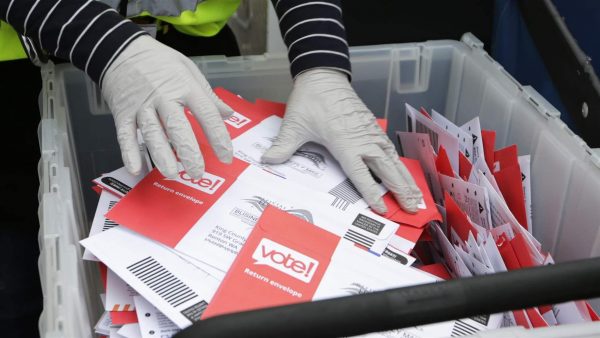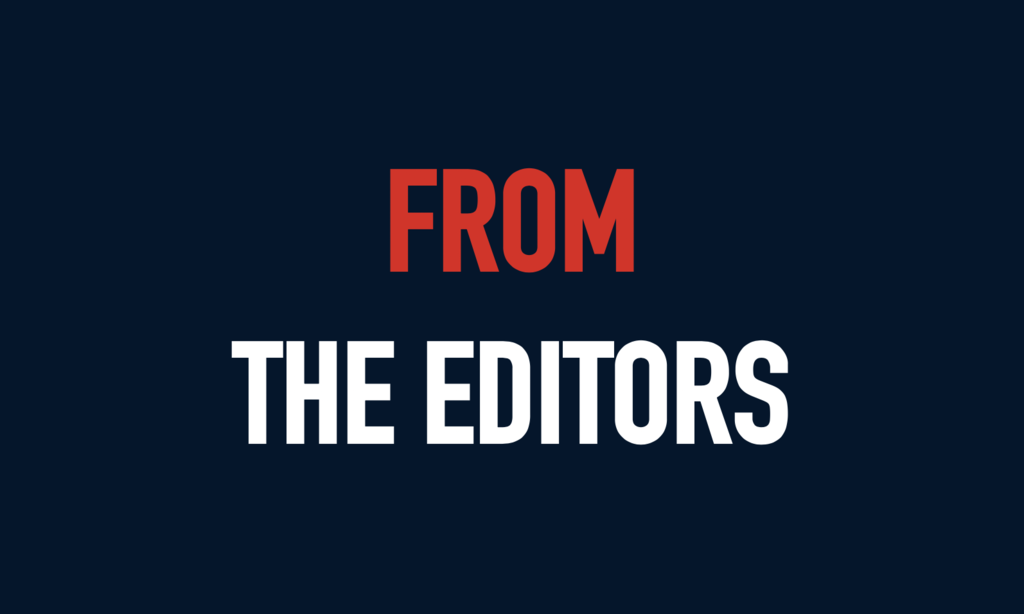Who’s really suppressing the people’s voice?
Are We Sure About All Those Mail-in Ballots?

It’s not unreasonable to demand answers.
As media outlets and other public-facing institutions across the country rush to coronate Joe Biden as president-elect and Kamala Harris as vice president-elect, those on the Right (properly) concerned with what might seem like a larger than normal volume of voting abnormalities have invariably been told to sit down, be quiet, and not ask any questions. There are indeed some very suspicious voting-related anecdotes from this election, and the Trump campaign’s multi-state legal strategy should entail challenging each and every eyebrow-raising incident in court.
But there is also a broader, systemic point about the legitimacy of this unique election’s voting tabulation process that too few seem to be making. It pertains to what is perhaps the singular defining feature of our recent mid-pandemic quadrennial exercise in civic efficacy: the ubiquity of mail-in ballots all across the land.
As soon as COVID-19 shut down large swaths of the country in March, many conservatives and other defenders of a secure and durable franchise began to point out possible problems. At Newsweek, where I serve as opinion editor, we held a “debate of the week” on this issue in June. J. Christian Adams and Hans von Spakovsky persuasively, and quite presciently, argued that this unprecedented exercise in national mass mail-in voting entails numerous systemic risks: lack of basic administrative infrastructure and personnel competency, inaccurate voter rolls, multiple registrations, decedent registrations, ballot harvesting, and venal postal service employees, to name just a few.
These sundry problems very much include, but are hardly limited to, the numerous states where ballots were mass-mailed to everyone on the voter rolls. And these conceptual problems don’t even get into specific state-by-state legal requirements, such as signature verification, copies of voters’ photo identification, and postmark date deadlines. Every state is different; Pennsylvania, for instance, where the Trump campaign will focus much of its litigation, requires a sealed privacy envelope.
In fact, during primary season earlier this year, we know that a lot of mail-in ballots were thrown out for failing to meet various state law requirements. In New York City, during New York State’s June 23 primary, 21% of all mail-in ballots—totaling approximately 84,000 raw votes—were invalidated. Those 84,000 (non-)votes, if properly sprinkled across Georgia, Pennsylvania, Wisconsin, and Arizona, could have already come close to securing a second term for President Trump. This presidential race, across the true nail-biter states, really is that close.
Other examples abound. In the Wisconsin primary, the rejection rate was around 2%—which seems low until one considers that the raw total of rejected ballots was 23,169, greater than Trump’s current deficit in the Badger State. In Pennsylvania, election officials were fretting as recently as late September that the commonwealth might have to reject as many as 100,000 mail-in ballots.
Given this, I have a very simple question. Are we completely certain that “all” of these mail-in ballots across the battleground states, which have disproportionately gone to Biden due to the very simple fact that the Democrats heavily campaigned on a mass mail-in voting platform, are legitimate? Are we completely sure that each and every mail-in ballot that has been cast for Biden has, in fact, been in legal compliance with the relevant rules and regulations of that specific voting jurisdiction?
According to the U.S. Elections Project, as of November 5, there were 1,009 mail ballots rejected in the Commonwealth of Pennsylvania out of over 2.6 million mail-in ballots cast. That is simply implausible. The same website reports a miserly mail-in ballot rejection rate in Georgia of 0.2% (also as of November 5), despite the fact that it had a rejection rate during primary season earlier this year of roughly 1%. Georgia, of course, is a state where Trump currently trails Biden by roughly 12,000 raw votes.
There may well be innocent explanations for all of this. But it would be far too easy to imagine one-party Democratic machine jurisdictions padding the vote tally for their candidate by mass non-disqualification of mail-in ballots that would otherwise merit closer scrutiny. Why is no one on the Right bringing up this exceedingly straightforward point?
The president’s legal team, and other astute public observers, need to start raising these questions. We need full transparency, and we need answers. And we need them now.
The American Mind presents a range of perspectives. Views are writers’ own and do not necessarily represent those of The Claremont Institute.
The American Mind is a publication of the Claremont Institute, a non-profit 501(c)(3) organization, dedicated to restoring the principles of the American Founding to their rightful, preeminent authority in our national life. Interested in supporting our work? Gifts to the Claremont Institute are tax-deductible.
It’s time to unmask the Revolution.
It will all go according to plan—unless we stop it.



